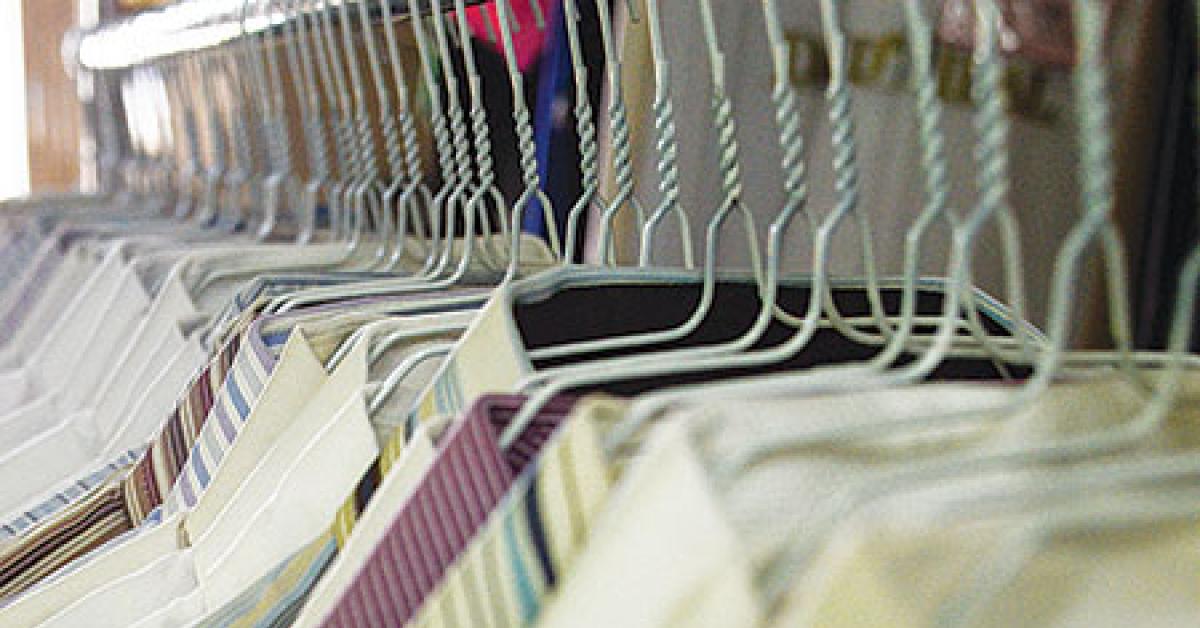PEMBROKE, Mass. — As a dry cleaner, you run a factory. The unifying principle of all factories is efficiency.
If you question my metaphor of a dry cleaner as a factory, it is correct that a dry cleaner does not turn out a product, but instead imparts a service onto goods. But by adding to that product — providing cleaning and wearability — you qualify as a production operation.
Make every operation the most efficient it can be and your cost per unit will be the lowest possible sum.
Efficiency experts of the past saw better ways to do things. They saw how motions could be eliminated. They revamped the production floor.
You need to learn to become a careful observer. Put on your “ultra-violet glasses” that remove the extraneous stuff around the individual and focus on movements, motions and thought processes.
Keep trying to improve, to refine the production process. Visit other businesses. You never know when a new machine will fit your operation.
When you visit a business, go with a notebook, for nothing ensures idea retention better than writing it down. How do you line up these visits? Your competitors won’t welcome you.
Join a cost group. Visit dry cleaners in other markets that you met at trade conventions. On a road trip, line up several dry cleaners to visit. Call fellow association members to arrange for swap visits — you visit my place and I’ll visit your place, and we’ll learn from each other.
Develop performance benchmarks. Keep these figures in a notebook. In time, you will look back and see the efficiency strides you have made. You will be able to correlate these improvements with equipment purchases.
See the big picture.
Envision the whole process: The product arrives at the counter, is tagged, goes to the cleaning machine, goes to the pressers, then finishers, then the inspector and is brought to the rail for retrieval.
Could machines be shifted around to make the process move more smoothly? Can you push a wall back to give more room for a better cleaning operation? Can the truck bay be placed on the other side of the building so that clothes can be unloaded at the intake operation?
Always remember that production is logic. The logic of efficient utilization, of flow.
Motivating staffers helps.
Every production worker likes a chance to earn a bonus. Possibly a team bonus would be best, where the production staff earns $200 every week they exceed the production in the required hours with no overtime. If there are eight people, that’s $25 each. Not a bad bonus for a good week’s work.
Yes, this will cost the company $10,000 (presuming the goal is achieved each week), but it could just be the motivator that achieves top performance. Even on a dollar basis, spending $10,000 on bonuses might be better than paying 800 hours of overtime, at $15 an hour, which comes to $12,000.
At the same, never sacrifice quality. Maintaining quality is absolutely necessary for your business to succeed. It would be easy for production workers to go after the bonuses you offer, letting quality deteriorate.
Keep a watchful eye on your quality standards for each operation and see that they are maintained. Respond to all customer complaints, identify the guilty party and take prompt corrective action.
Now go into your plant and make it the most efficient operation possible.
To read Part One, click HERE.
Have a question or comment? E-mail our editor Dave Davis at [email protected].

